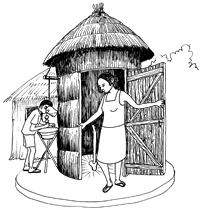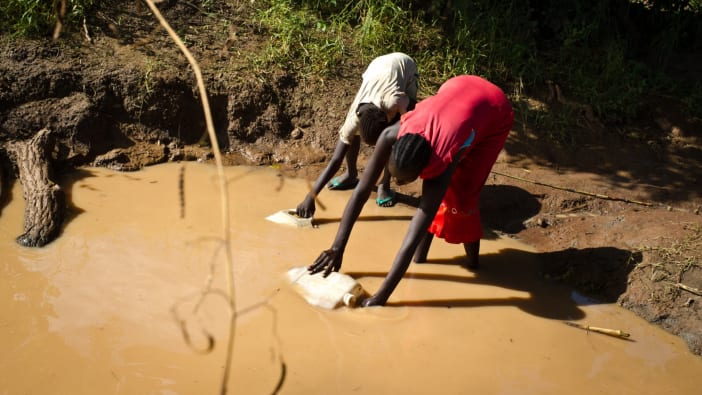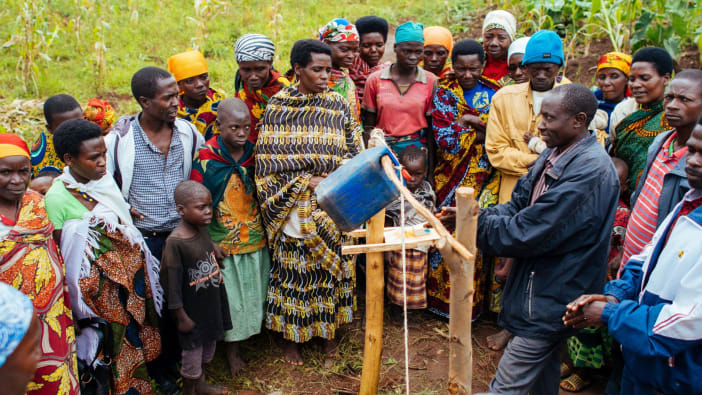If people do not have access to latrines, then burying faeces in the ground is a simple step that will improve hygiene. It will reduce people’s risk of contact with faeces.
Building and using latrines is a really important way of reducing the risk of spreading microbes and worms among our family and neighbours. They also improve household well-being and safety, especially for women and children. Families should be able to take pride in their latrine, knowing how much using a latrine will improve their family’s health.
Using latrines will prevent flies, pests and animals having any contact with faeces so they cannot spread microbes into our homes, food or children. It is important to keep latrines clean, so that people will want to use them. The floor can be washed regularly with soapy water left over from washing. Place a tippy tap and soap by the entrance for hand washing.
There are several types of latrine. These include ordinary pit latrines, VIP latrines that control bad smells and flies, and water seal latrines that use water to flush. Composting latrines speed up the breakdown of faeces into safe compost, by separating urine and keeping faeces dry. The urine is mixed with water and used for plants. Soil is mixed with the faeces and the pit sealed for at least a year when full. Then it will be safe to use as compost.
Discussion
- Most people have experiences of using bad latrines they would rather forget! What kind of problems have people experienced with using latrines? What are some of the benefits?
- What type of latrines are used in our area?
- What kind of people usually have household latrines?
- Do men use the latrine or do they consider them only for women and children?
- Does the safety of young girls and women need to be considered when planning latrines?
- Who is responsible for repairing and cleaning latrines?
- Do people in our community use a latrine at night? If not, what do they do?
- Does anyone have any experience of using composting latrines? In some cultures it may not be acceptable to use human faeces as compost even after several years. What would be the advantages of using composting toilets? Where could we get more advice about these?
- Plan a short role-play about a visitor who shares a meal with a family and then wants to use a latrine. The family do not have one. Show their embarrassment at having to explain this. How could the role-play end positively?










